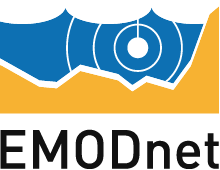
The goal of EMODnet Human Activities is to make access to existing marine data on activities in EU waters easier by creating a single point of access to geographic information on 14 different topics. The portal makes available information such as geographic location, spatial extent of a set of sea-related activities, their temporal variations, when the data were provided, and attributes to indicate the intensity of each activity. Data are aggregated and presented in a manner that protects personal privacy and commercially sensitive information. The data also include a time interval so that both historical and current activities can be included.
The information provided through the portal is collected from various sources, harmonized and made interoperable. The data are free and unrestricted, so they can be used by a multitude of stakeholders (policy makers, researchers, students, businesses, etc.).
EMODnet Human Activities revolves around a few key principles:
- This is not a new collection of data: the portal simply pools together existing resources. The logic is that a considerable number of institutions are already collecting reliable data in Europe, and there is no need to duplicate their efforts. EMODnet Human Activities intends to make the most of what is already available.
- Everything is entirely voluntary: all data providers share their data and contribute to the project goal. Data sources do not receive monetary contributions for sharing their data.
- Data must be harmonized and interoperable: the added value of EMODnet Human Activities lies in its ability to provide standardized information that cannot be found elsewhere in a common format.
- Data are maintained by the authors: unlike many projects that aim to build their own database, the principle behind EMODnet is that primary data sources should remain responsible for their data. This means that whenever possible EMODnet encourages sources to provide their data through machine-to-machine connections. In this way, the data are not transferred to a centralized database, and are managed by their authors.
